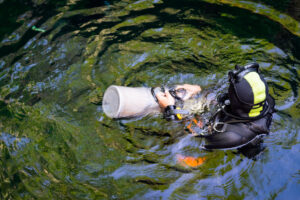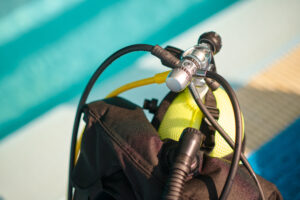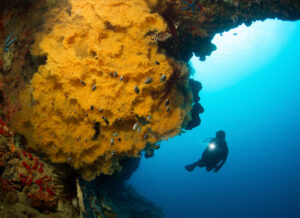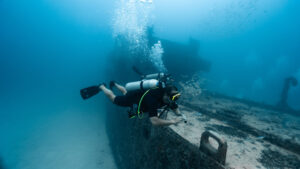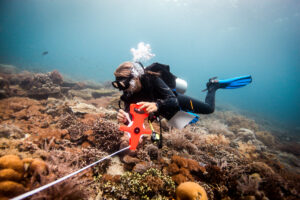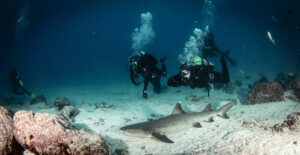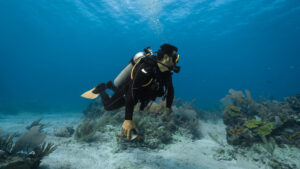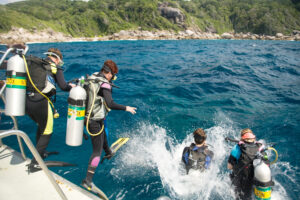What is a Delayed Surface Marker Buoy?
A delayed surface marker buoy (DSMB) is an essential piece of equipment used by scuba divers to enhance safety and communication during their underwater activities. Unlike a standard surface marker buoy (SMB), which is deployed at the beginning of a dive, a DSMB is typically deployed from underwater, often towards the end of the dive. This allows divers to mark their position and signal their ascent to the surface, providing visibility to boats and other watercraft in the vicinity. The DSMB plays a critical role in preventing accidents, ensuring divers are easily located, and facilitating safe and efficient dive operations.
History and Development
The use of marker buoys dates back to early maritime practices, where floating devices were utilized to signal the position of underwater divers or objects. Initially, these buoys were simple floating markers with limited functionality. As recreational and commercial diving grew in popularity, the need for more sophisticated and reliable signaling devices became apparent.
The concept of the DSMB emerged as divers sought to improve their safety measures, especially in areas with heavy boat traffic or during complex dives. Early versions were rudimentary and lacked the advanced features seen in modern DSMBs. Over time, advancements in materials and technology allowed for significant improvements. The introduction of durable, high-visibility materials, along with innovations in inflation mechanisms, contributed to the development of the DSMB as we know it today.
Notable contributions to the evolution of the DSMB came from both individual inventors and diving equipment manufacturers. Companies specializing in diving gear began to produce more specialized and reliable DSMBs, incorporating feedback from the diving community. This collaborative effort between divers and manufacturers resulted in the widespread adoption and standardization of DSMBs in diving practices worldwide.
Design and Types of DSMBs
The design of a typical DSMB is straightforward yet highly functional. Most DSMBs are elongated, tube-like devices made from durable, high-visibility materials such as nylon or PVC. The bright colors, usually orange or yellow, ensure they are easily seen from a distance. The length of a DSMB can vary, with common sizes ranging from 1 to 2 meters (3.3 to 6.6 feet).
Different types of DSMBs are available to suit various diving conditions and preferences. One key variation is in the inflation mechanism. Some DSMBs are manually inflated using a diver’s breath or a low-pressure inflator hose, while others feature an auto-inflation system that activates upon deployment. This automatic inflation can be particularly useful in emergency situations where time and ease of use are critical.
DSMBs also differ in their sealing mechanisms. Permanently inflated DSMBs remain buoyant once deployed, while self-sealing DSMBs close off after inflation to maintain buoyancy without continuous air supply. Open-ended DSMBs, on the other hand, require the diver to maintain the buoyancy by controlling the air supply. Each type has its advantages and disadvantages, depending on the diver’s needs and the diving environment.
Functional Mechanism
The deployment of a DSMB typically occurs towards the end of a dive, as the diver begins their ascent. The process starts with the diver preparing the DSMB by attaching it to a reel or spool of line. The buoy is then inflated, either manually or automatically, and released to float towards the surface. As it ascends, the reel unwinds, allowing the buoy to mark the diver’s position without pulling them upwards.
Once the DSMB reaches the surface, it remains visible, providing a clear signal to boats and surface personnel. The line connecting the buoy to the diver serves as an anchor, preventing the buoy from drifting away. This system ensures that the diver’s ascent is controlled and safe, with their position clearly marked for anyone monitoring the surface.
Attachments and rigging options for DSMBs vary. Some divers prefer using a simple spool, while others use more complex reels with locking mechanisms to manage the line. The choice of attachment depends on the diver’s comfort and the specific requirements of their dive.
Uses in Scuba Diving
DSMBs serve multiple critical functions in scuba diving. One of the primary uses is enhancing safety during ascent. By deploying a DSMB, divers signal their position to boats and surface personnel, reducing the risk of collisions and ensuring they can be located easily. This is especially important in areas with heavy boat traffic or poor visibility conditions.
In addition to safety, DSMBs are valuable communication tools. Divers can use them to signal different messages to the surface, such as indicating the end of a dive or an emergency situation. Different colors or markings on the DSMB can convey specific information, allowing for effective communication without the need for direct contact.
DSMBs also play a role in navigation. Divers can use them to mark specific locations underwater, such as the starting point of a dive or areas of interest. This marking helps in maintaining orientation and ensuring that divers can find their way back to key points during their dive.
Special applications of DSMBs are found in technical and deep diving. In these scenarios, DSMBs are used to mark decompression stops, where divers need to pause during their ascent to safely eliminate excess nitrogen from their bodies. The DSMB provides a stable reference point for these stops, ensuring divers can manage their ascent rate accurately.
Training and Best Practices
Proper training is essential for the effective use of DSMBs. Divers need to understand the mechanics of deploying and managing a DSMB, as well as the safety protocols associated with its use. Many diving certification agencies include DSMB training in their courses, emphasizing the importance of this skill for diver safety.
Best practices for DSMB use include thorough pre-dive checks to ensure the DSMB and its attachments are in good working condition. Divers should practice deploying the DSMB in controlled environments before using it in real dive scenarios. This practice helps build confidence and proficiency, reducing the likelihood of errors during an actual dive.
Safety precautions are crucial when using a DSMB. Divers should be aware of their surroundings and ensure they are not deploying the DSMB in a way that could entangle themselves or others. Proper line management is essential to prevent entanglement and ensure a smooth ascent. Additionally, divers should communicate with their dive buddies and surface personnel before deploying the DSMB to avoid confusion and ensure coordinated actions.
Challenges and Limitations
While DSMBs are invaluable tools, they are not without challenges and limitations. One potential problem is malfunction or failure of the DSMB or its inflation mechanism. Divers need to regularly inspect their DSMB and ensure it is in good working order before each dive. Carrying a backup DSMB can also mitigate the risks associated with equipment failure.
Environmental factors can affect the performance of DSMBs. Strong currents or rough seas can make it difficult to deploy and manage a DSMB. In such conditions, divers need to exercise additional caution and may need to adapt their deployment techniques to ensure the DSMB functions effectively.
Legal and regulatory considerations vary by region and diving location. Some areas have specific regulations regarding the use of DSMBs, including requirements for certain types of buoys or mandatory training for divers. It is essential for divers to be aware of and comply with these regulations to ensure their safety and avoid legal issues.
Key Takeaways
The delayed surface marker buoy is a crucial piece of equipment in scuba diving, enhancing safety and communication. Its development has evolved significantly, offering divers various types and designs to suit different needs. Proper training and adherence to best practices are essential for effective use, and understanding the potential challenges and limitations ensures divers can maximize the benefits of DSMBs while minimizing risks. As diving technology continues to advance, DSMBs will likely see further improvements, continuing to play a vital role in safe and enjoyable diving experiences.


